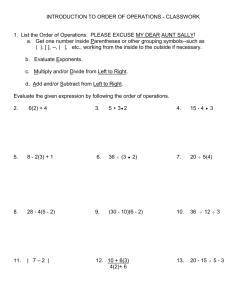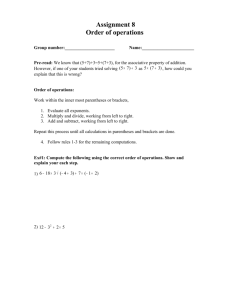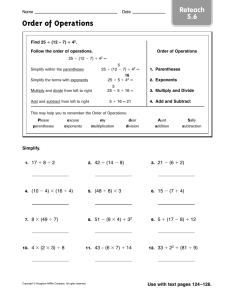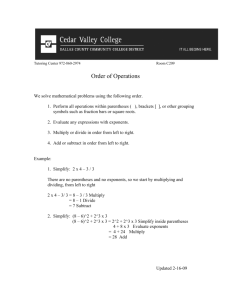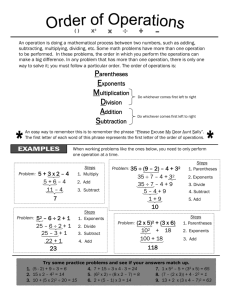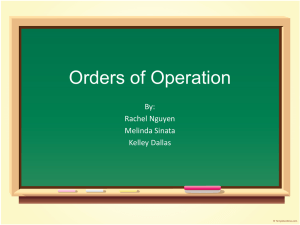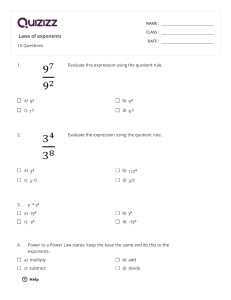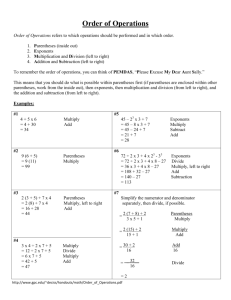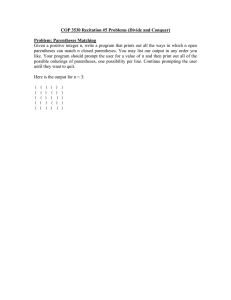Rules for Order of Operations
advertisement
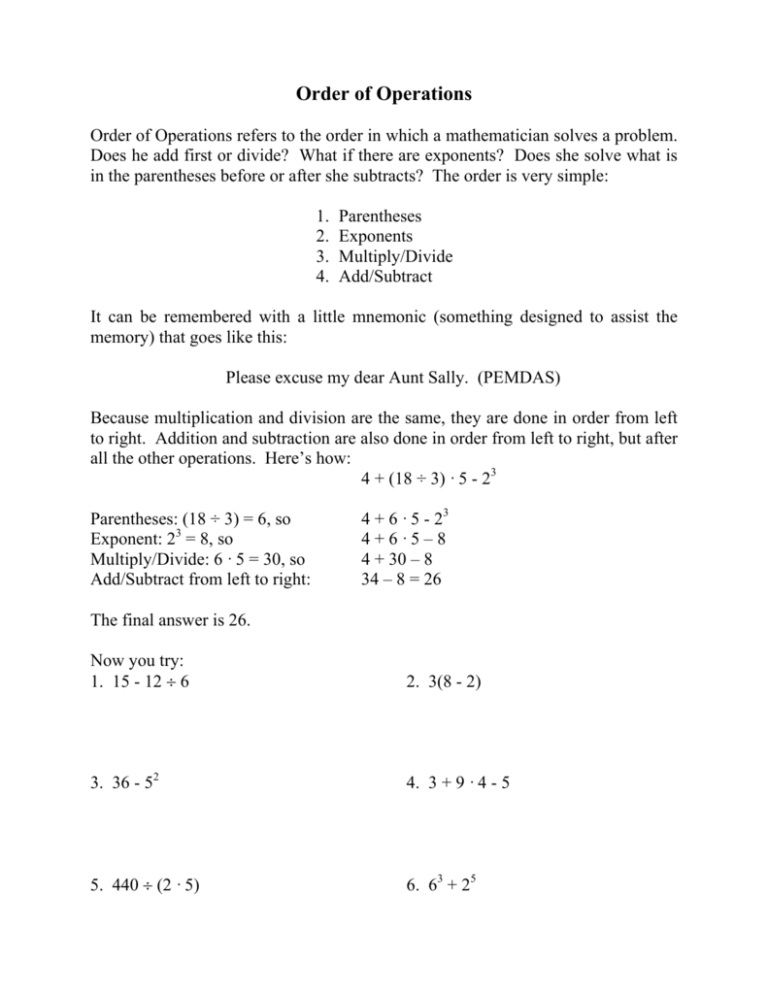
Order of Operations Order of Operations refers to the order in which a mathematician solves a problem. Does he add first or divide? What if there are exponents? Does she solve what is in the parentheses before or after she subtracts? The order is very simple: 1. 2. 3. 4. Parentheses Exponents Multiply/Divide Add/Subtract It can be remembered with a little mnemonic (something designed to assist the memory) that goes like this: Please excuse my dear Aunt Sally. (PEMDAS) Because multiplication and division are the same, they are done in order from left to right. Addition and subtraction are also done in order from left to right, but after all the other operations. Here’s how: 4 + (18 ÷ 3) · 5 - 23 Parentheses: (18 ÷ 3) = 6, so Exponent: 23 = 8, so Multiply/Divide: 6 · 5 = 30, so Add/Subtract from left to right: 4 + 6 · 5 - 23 4+6·5–8 4 + 30 – 8 34 – 8 = 26 The final answer is 26. Now you try: 1. 15 - 12 ÷ 6 2. 3(8 - 2) 3. 36 - 52 4. 3 + 9 · 4 - 5 5. 440 ÷ (2 · 5) 6. 63 + 25
